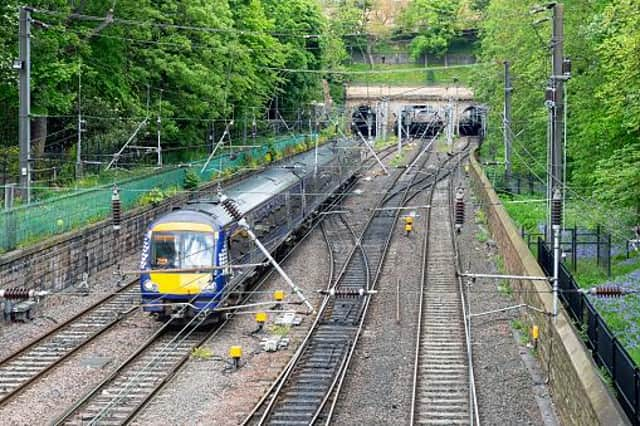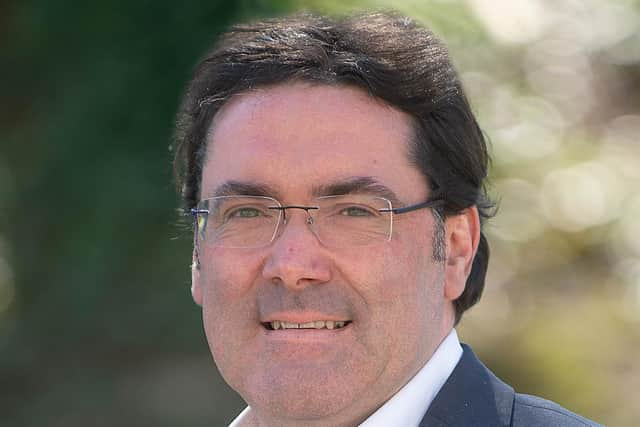Public transport is facing a Covid-fuelled crisis - Professor Iain Docherty


Public transport is facing a crisis of a scale that nobody currently working in the sector has faced before. The railways have suffered particularly badly from Covid, with passenger numbers plummeting 95 per cent during the first lockdown. Recovery over the last 20 months has been stuttering, with stronger working from home guidance in Scotland meaning that commuting demand here has remained particularly depressed.
Before Omicron hit, passenger numbers had recovered to around two thirds of pre-pandemic levels, but early indications are that this has already fallen back sharply since both the Scottish and UK governments expressed strong concern about the potential impacts of the new variant. Initial figures estimated a fall of 20 per cent in the numbers of people arriving in London and other major English cities by train this Monday compared to last, with a slightly lower decline in Scotland.
Advertisement
Hide AdAdvertisement
Hide AdThe impact of the drop in use of the railways on the public purse is enormous. The recent Scottish budget increased spending on rail to almost £1.4bn next year, around double the figure only five years ago. The additional direct revenue support paid to keep ScotRail and Caledonian Sleeper services running attributable to the Covid-related fall in passenger numbers alone is now in excess of £200m per year.


The collapse in passenger numbers and consequent spike in public financial support also rendered the system of rail franchising obsolete overnight. As a result, there has been a substantial reassertion of direct government control over the management of the rail sector. In England, the Department for Transport has written to operators asking that they find £1.5bn in savings in the next year alone. On Wednesday, the Mayor of Greater Manchester, Andy Burnham, warned that the north of England’s railways could be entering a ‘period of managed decline’ as a result.
In Scotland, ScotRail has already restructured its timetable to reduce operating costs, primarily by reducing capacity in the peaks when many fewer people are travelling compared to pre-pandemic. The Scottish Government’s ambitious plans to decarbonise the railway by 2035 are continuing apace, but here too there are already impacts: the recent decision to electrify the East Kilbride line in its existing single-track form was made precisely because the business case for doubling the route could only be justified based on demand for travel in the peak that no longer exists.
Given the fixed budget available to the Scottish Parliament, Ministers are acutely aware that a pound spent on rail is a pound not spent on health, education, or other public services. At the very least, there will be further efficiencies required across the board from how engineering maintenance is undertaken to how tickets are sold to keep costs under control. But if demand falls further, there may yet be increasing pressure to reduce service levels in response here too.
There is no doubt, then, that the short-term picture for rail is extremely challenging. After two years or more of changed working practices, it seems incredible to suggest that things will somehow revert to how they were before. Especially for those white-collar jobs that had the greatest proportion of rail commuters before the pandemic, and future of blended working and substantially less travel to and from the office in future seems likely to be a reality that the rail industry and city centre economies will have to adapt to.
Yet looking further forward, we know that there are no feasible pathways to achieving the decarbonisation of transport – which currently accounts for around 40 per cent of emissions in Scotland – that don’t involve greatly increased use of public transport, including rail. Even with permanent increases in working from home and continued expansion of the use of online meeting tools to replace business travel, models illustrating how we can reach Net Zero estimate that rail will have to carry roughly double the numbers of passengers it did pre-pandemic. How then does government and the rail sector square the circle of acute short term funding pressures and the need to secure long-term expansion?
The answer is the sector needs to do everything it can to rebuild passenger numbers whilst continuing to reduce its costs. In terms of attracting people back to rail, there is at least some cause for optimism. Leisure travel on the railways is enjoying something of a boom as overseas holidays remain difficult. Over the summer period, many leisure routes surpassed their previous record passenger numbers, and full or even overcrowded trains were commonplace. This is crucial because it demonstrates an important ‘revealed preference’, that travellers are still very happy to use the train if their journey is important enough to them.
If people are still eager to use the railways, then the industry needs to respond by giving them the best possible reasons to do so. Placing rail on a sustainable footing for the future requires addressing some longstanding issues. Perhaps most obvious is the vast array of available tickets and the high price of some journeys. Ticketing reform has been talked about for many years but is now more necessary than ever, especially as the cost of travel has become acutely apparent to many people as they have avoided forking out for a season ticket by working at home. But then proper road pricing so that we pay the real costs that our own individual transport choices exert on the economy and our fellow citizens is also crucial.
Advertisement
Hide AdAdvertisement
Hide AdEarlier in the pandemic, the rail sector was fearful that many passengers would never return because of the ‘avoid public transport’ message and that fear of the virus would stick. But now, rather than public health, it is the financial health of the sector that is the biggest problem in charting a COVID recovery that sets us on the pathway to the emissions reductions demanded by the negotiations at COP26.
Professor Iain Docherty, of the University of Stirling Management School
Comments
Want to join the conversation? Please or to comment on this article.
